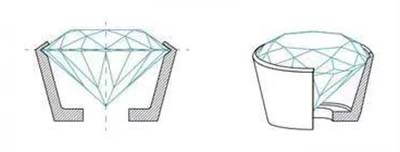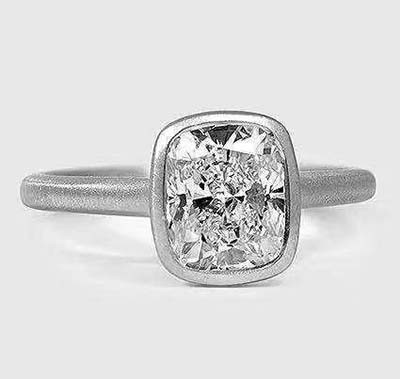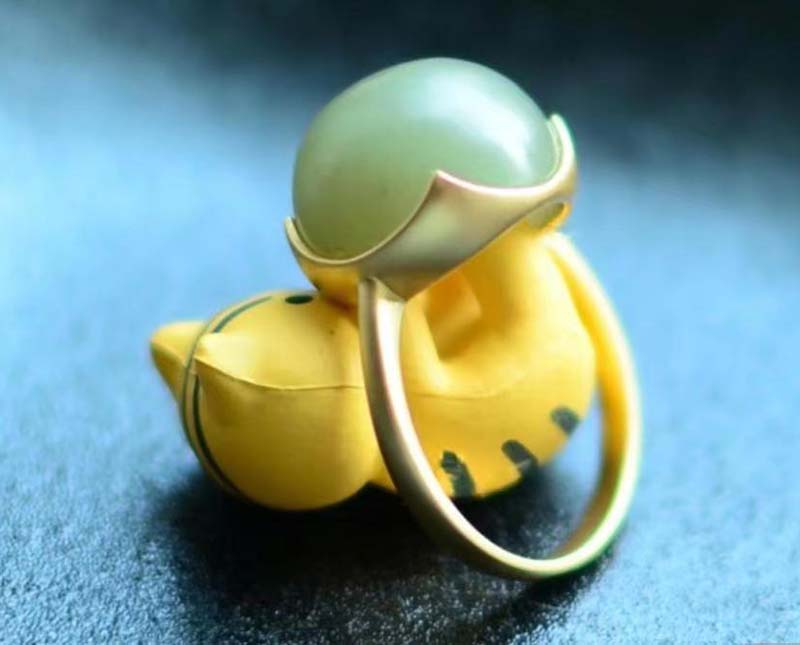In the previous article, we introduced the pavement setting. Most people’s impression of the pave setting is: rigid, boring.

The king of solidity in the world of inlay – bezel setting
what is bezel set?
A bezel setting is one in which the girdle of a gemstone is encircled by pushing down on a raised metal bezel.


The traditional bezel setting consists of two main parts, the bottom lining and the raised metal edge.
The bottom lining serves to hold up the gemstone, while the raised metal edge encloses the gemstone.



Because the exposed portion of the stone is reduced and very firm, bezel setting is a more commonly used setting method.
Bezel setting can be used not only on the main stone, but also on the secondary stone, the matching stone, and even on the claw. This makes it very practical.


Advantages and disadvantages of bezel setting
The advantages of Bezel setting is suitable for large particles of gemstones, especially with curved gemstones.
Also suitable for girdle-shaped irregular gemstone setting, it is the most stable setting method, and difficult to modify the inlay deformation.


However, because of its encircling effect on the gemstones, the size of the exposed part of the gemstones is reduced, the area wrapped by the metal edge is larger.
And the translucency is relatively weak, which is not conducive to transparent gemstone setting.
Play out the bezel setting style

Most people’s impression of bezel setting is that it is old-fashioned and old-fashioned. In fact, bezel setting has a variety of ways to play.
Basic bezel Setting
The basic bezel is a more versatile, no-mistake inlay style, unobtrusive and solid, and provides excellent comfort for wearing on a daily basis. It’s perfect for those of you who like understated, everyday styles.
Although a basic wrap may seem ordinary, it can be personalized and trendy with a little bit of design in the overall ring styling.


Bezel + Bead Edge
A beaded edge gives a more sophisticated, classic look to the bezel.
The use of the wrap in the ring arm matching stone, will give the ring arm the visual effect of the row ring.
In the wrap on the basis of small beads on the edge, the style of the moment will be different again.


Bezel + Twisted Edge
The addition of a twisted edge to the bezel gives it vintage elegance.
In some antique jewelry, it is also common to see the craft of twisted edge inlay.


Bezel + Weaving
Layering hand-woven weaving on top of twisted lace pulls in the vintage flavor!
Bezel + ladder
Suddenly, the basic package that makes layers becomes full of texture.



Bezel + irregular edge
Wrapped edge does not have to be regular, the addition of irregular geometric elements. So that the main stone of the flat and boring also become modern and modern.
Bezel + Lace
For curved gemstones with high curvature, the bezel edge should be higher in order to set securely.
But if the bare stone as a whole is surrounded by a high metal flush, it will cover a large area of bare stone, which is the best solution to add lace to the bezel.
The shape, height and texture of the lace can be adjusted according to the design style.


Bezel + hollowing
For large and thick egg-faced nude stones, openwork pave is more dynamic, and openwork pave is more gold-saving than solid pave.

Bezel setting + wire texturing
The combination of bezel setting and metal surface texturing gives bezel-set jewelry texture.

Bezel Setting + studded sand

Bezel Setting + Hammered

Sometimes ,design can be like stacking, combining elements to create infinite possibilities. Try playing a stacking game based on pave.














